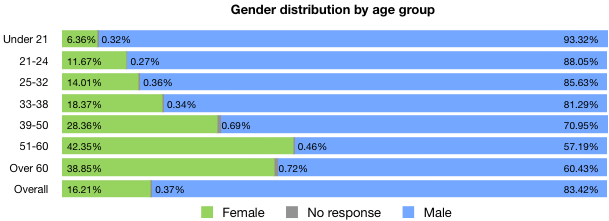In this latest resurgence of the “are blog comments distilled joy or pure evil?” conversation, I got tagged by Alastair Campbell as someone whose site has good comments. This would be a great time for an abashedly mumbled “aw, shucks, it ’tweren’t nuthin'”, except saying so would be a complete lie.
Want to know how I get good comments? I work for them. Part of that is striving to write good posts that will get good comments. Another part is leading by example. And a third part is a willingness to filter the comments I get, and saying as much up front.
The first part is in many ways the hardest, because what I think is a good post may be judged otherwise by my readers. I could spend days and days and days on a post that merits a collective “meh”. From that, I learn. If this were solely a “me shouting whatever comes to mind” site, then I wouldn’t care so much, but this is a conversation site. The goal here is not for me to pronounce my views from on high and thus change the world. The goal here is to share information, with the sharing going in both directions, and thus change ourselves.
The second part is a lot easier for me, but seems to be harder for some. It’s very, very rare that I will post confrontationally or abusively. The few times I’ve done so, I’ve gotten some strong pushback, and no wonder. The vast majority of the time, the posts conform to the site’s overall Airbag Blog Advisory System warning level of Guarded (“Someone might disagree with you, but only after apologizing for it first”). Unsurprisingly, the non-spam comments that come in are respectful, helpful, and civil about 99% of the time. Whether the tone of the site only draws people who are naturally that way or it shepherds all kinds of people in that direction is unknown, and to me wholly irrelevant.
It’s also the case that when the comments and the post match in tone, it’s much more likely that subsequent comments will keep to the same tone; that is, that the commenters help me in setting the tone for the site. And I always, always appreciate that they do so. (So thank you!)
The third part can be taken one of three ways. You can say that I’m like a curator who lovingly tends a growing collection of thoughts and contributions, only excising those that would damage the overall whole; or that I’m a tiny fascist who only lets through comments that meet my personal standards of acceptability. The thing is, both are true (which is the third way you can take it).
Y’see, this here blog is to me an extension of my home. In my house, some things are acceptable and others are not. Nobody is allowed to smoke in my house, for example. In terms of speech, I’m pretty tolerant of what others have to say, but there are lines and I will enforce them. Have enforced them, in fact, usually gently—although I once very nearly ejected an out-of-town friend who was staying with us from my house for something that was said. And no, I won’t tell you who or why.
So as I say, you can take that as abrogation of my visitors’ freedom of speech and an exercise of my right to make my home the kind of place I want it to be. It really is both. I don’t see that as a problem.
I treat css-discuss the same way, actually. It is, and always has been, a benevolent dictatorship, with policies that are enforced. When people go off-topic, the moderators say so and end the threads. When people get abusive, they’re warned to stop it, and can and will be ejected from the list. In fact, I’ve done so twice in the list’s five-year history. The moderators and I work actively to shape the list, and it has paid off. The community now mostly polices itself, and the need for moderator intervention is becoming more rare. Over time, it’s become a very helpful community with a very high signal-to-noise ratio. Others have observed that it’s spawned one of the few truly useful group-run wikis in the world. None of that just magically happened. It required years of effort by me, and then by the moderation team.
(And before someone says that a small mailing list is different than a globally available blog, remember that css-d has over 8,300 subscribers from all over the world.)
The other person who got mentioned in Alastair’s post as having a good-comment home was Roger Johansson, who recently contributed his own thoughts on the topic. In that post, he hits a lot of the pros and cons of allowing comments: the feedback, the spam, the community, the abuse. One of the most subtle effects of comments is that it does make you think harder about what you post:
I realized that as I was writing I had started to subconsciously think about what kind of comments a post would trigger. I found it harder and harder to write freely, and to express myself the way I really want to.
It’s the same for me. The few times I’ve posted things I knew were going to contentious, it was after a lot of thought and consideration. In fact, almost everything I post goes through some degree of pre-approval based on what kinds of comments I think it will trigger.
Where I would seem to part ways with Roger is that I don’t think that’s a bad thing. One of the things those opposed to blog comments cite is John Gabriel’s Greater Internet F—wad Theory (warning: contains strong language)—as if it only applied to commenters. The basic anonymity of the Internet isn’t a case of not knowing names: it springs from the very, very low chance that we’ll ever meet in person. It applies just as much to those who write blog posts as those who comment on said posts.
Still, that sounds like I’m allowing the community to impose some constraints on me. Actually, it doesn’t sound like that: it is that. But I choose to do that, and frankly, I don’t think anything is lost in the bargain. Quite the contrary. I think more than a little is gained.
So weirdly enough, I find myself in disagreement with Joel Spolsky when he says:
The important thing to notice here is that Dave [Winer] does not see blog comments as productive to the free exchange of ideas. They are a part of the problem, not the solution. You don’t have a right to post your thoughts at the bottom of someone else’s thoughts. That’s not freedom of expression, that’s an infringement on their freedom of expression.
It’s the last sentence where I disagree, not the rest of it, which is provided for context. That last sentence is like saying that when I have an in-person conversation, anything the other person says is an infringement on my freedom of speech. In fact, it’s like saying that my response to his post infringes on his freedom of speech. Which is just silly.
Neither is my pre-filtering of posts an infringement of my speech. I am not forced to allow comments, nor to pre-judge my posts based on the expected reaction. It is something I voluntarily accept as part of having an extended conversation. If I felt that was becoming too much of a burden, I’d turn off comments.
I don’t have comments here out of obligation to some imagined right. I have them because they’re invitation to contribute, to enrich, to converse. Just look at what happened with the reset styles: over the course of a few posts, my original work was built upon and improved. The same thing happened in the early days of S5. Without comments, neither of those efforts would have gone as far nor been as well-developed as they eventually were. No, not even with e-mail, which is one-to-one and so doesn’t allow for the commenters to converse with each other.
Of course, not everyone wants to have a conversation right on their site, which is fine as well. I don’t think Daring Fireball is lessened for its not having comments. But part of the reason I think that is that John, being a strongly opinionated sort, would probably get the same kinds of comments in return; the bread you cast upon the waters will be returned to you tenfold. And the fact that much of his posting is about Mac and Windows wouldn’t help much, either. Nothing invites comment incoherency faster than having a blog about a contentious issue. (See also: political blogs.)
As well, there’s nothing that says one must have comments always on, or always off. It’s generally the case that I don’t open comments on the most personal of my posts, particularly those about Carolyn. In those cases, I close comments because I’m writing them for me and to share those moments with the world, and don’t want positive or negative feedback. They’re not meant to be conversations, in my view. They’re snapshots.
(I’ll admit that I may be influenced by the fact that it was a Carolyn-related post that earned me one of the most vitriolic personal attacks that I’ve allowed to stand.)
It is absolutely the case that having good comments is hard work. It requires leading by example and a willingness to curate/censor the comments that do come in. And I absolutely think that anyone unwilling or unable to do that work should disable comments. Because when a site’s comments devolve into “Useless noise[;] Thoughtless drivel written by some anonymous non-entity“, that’s as much the responsibility of the site’s author as of the commenters themselves.
Thus, for meyerweb, I hold to the inverse of Jeremy’s corollary of Sturgeon’s law: here, comments should be enabled 90% of the time. I would not think to apply either rule to the world at large, of course. For many sites, comments probably should be off by default. But not for mine.



